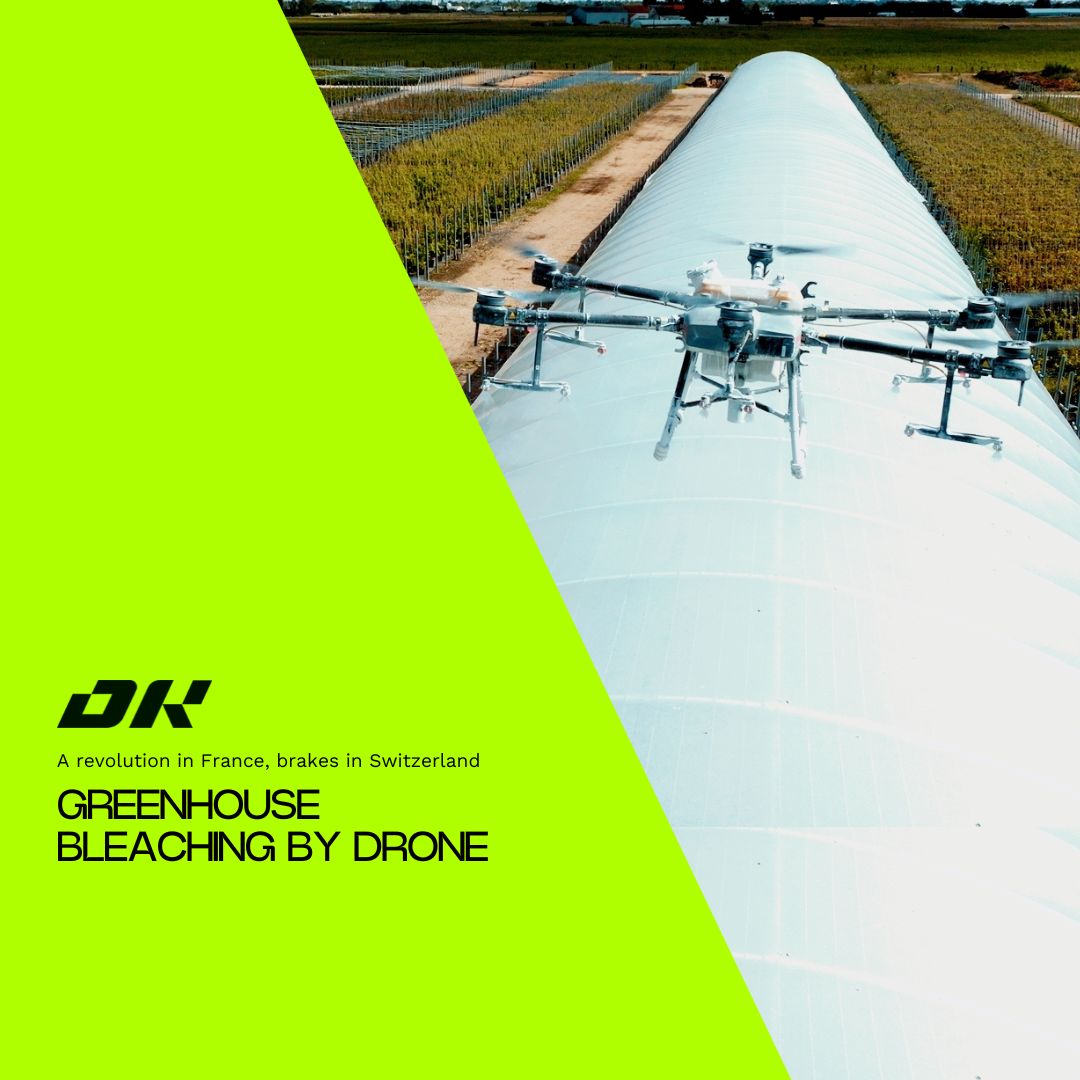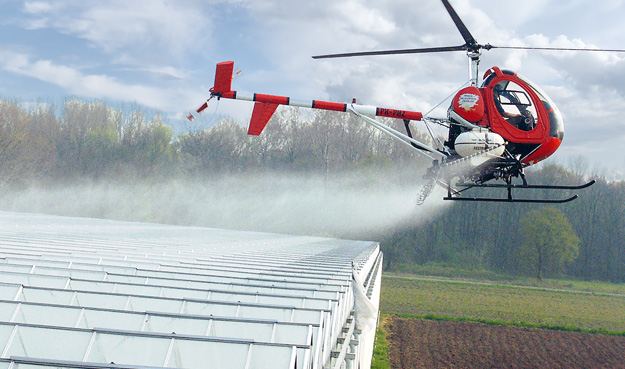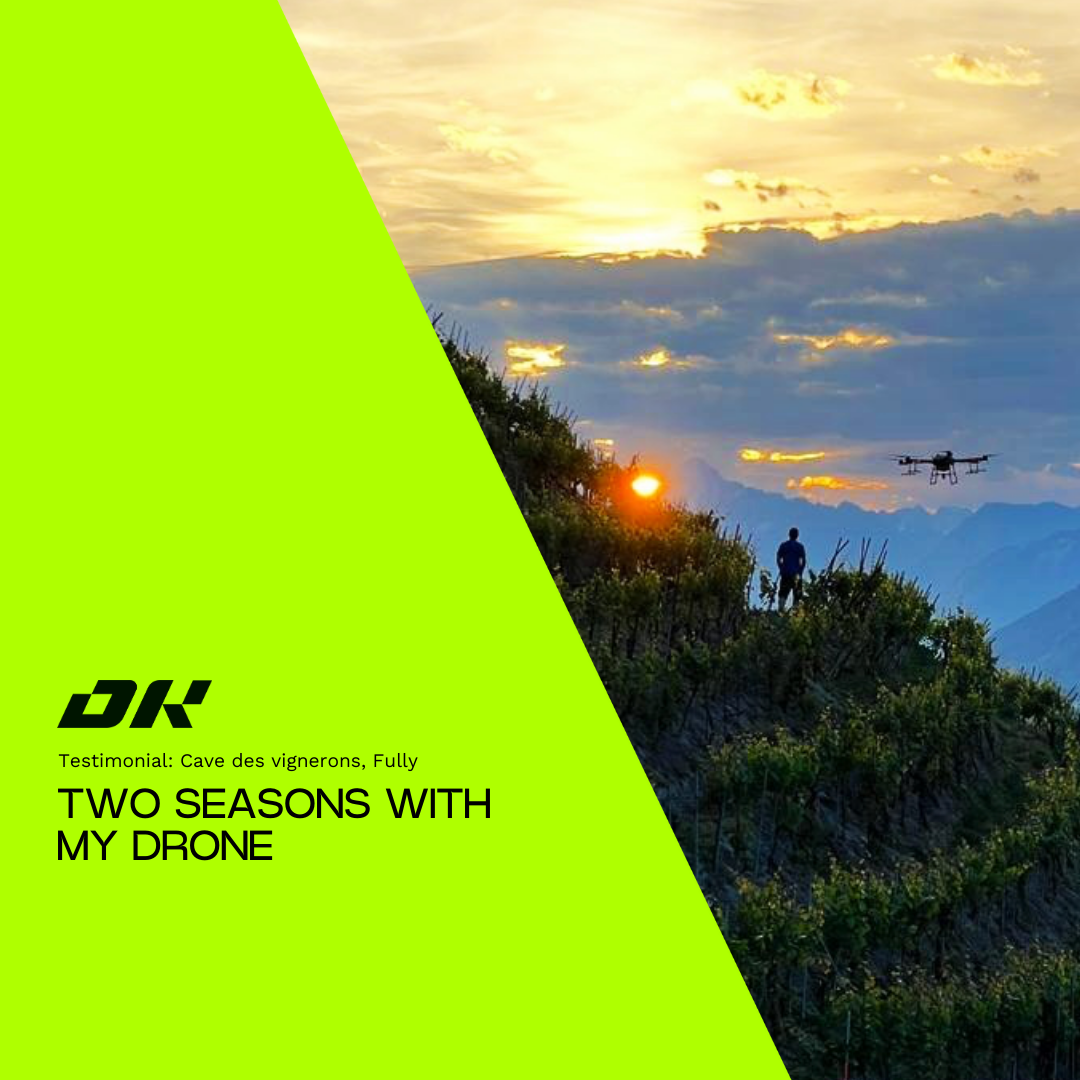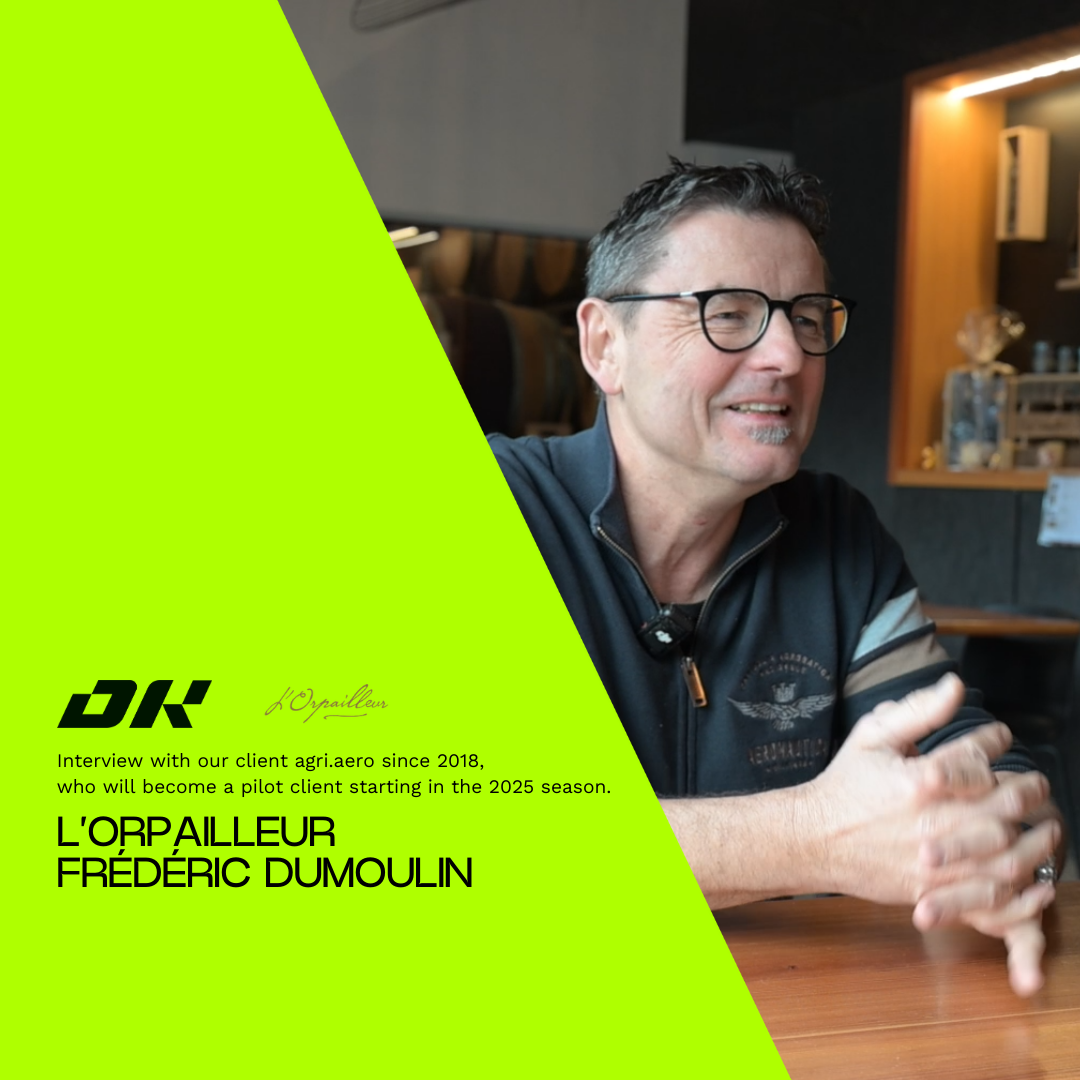Greenhouse bleaching by drone: revolution in France, but brakes in Switzerland

When the Friedrichs get together to talk about greenhouse bleaching…
We don’t know if it’s a coincidence, but to discuss greenhouse bleaching, we are joined by three experts named Frédéric: Frédéric Riche, farmer, Frederic Lance, director of DigitalRoots France, and Frédèric Robert, business engineer at Lumiforte. They all share their expertise and emphasise one fact: the drone is revolutionising this practice, but there are still regulatory challenges, especially in Switzerland.
A further development of traditional methods
Historically, the bleaching of greenhouses was carried out by hand using simple means such as lime. Today, this method has evolved considerably thanks to the integration of new technologies. Frederic Riche explains that since the introduction of drones for bleaching, the results are much more efficient, uniform and faster. This process means that there is less variation in the application of the products and avoids risks for the workers, who previously had to climb onto the roofs and risk falling through the glass roofs.

Frédéric Lance emphasises that the products used to bleach greenhouses have also evolved considerably and have become more environmentally friendly. There are biodegradable resins and formulations that are better at filtering light and heat. These innovations are particularly useful for maintaining the ideal temperature in greenhouses while optimising photosynthesis.
| Type of product | Composition | Sustainability | Ecology |
| Traditional products | Resins obtained from crude oil, calcium carbonate | Moderate (affected by rain) | Low biodegradability, environmental impact |
| Modern products | Synthetic resins, gritting agents | Good (duration several months) | Improvement in light filtering |
| Ecological products | Plant resins (starch, maize), natural biocides | Very good (adjustable duration) | 99% biodegradable, eco-certified cleaning agents |
Use of drones for bleaching: permitted in France, restricted in Switzerland
In France, the drone is now a recognised and widely used method for bleaching greenhouses. Frédéric Lance explains that this technique not only enables a more precise application of the products, but is also more profitable in the long term, as fewer products are lost and the work becomes more efficient.
In Switzerland, however, the situation is different. Although the Swiss Confederation has recognised drones as a soil treatment agent since 2018, the bleaching of greenhouses using drones is not yet permitted. The same agent can be applied manually or by helicopter. Frédéric Robert finds this contradiction very strange: drones offer greater accuracy and less dispersion of the agent. It is therefore astonishing that their use is still being blocked. This means that any drone bleaching application you might see in Switzerland is currently against the law. A regulatory problem that prevents Swiss farmers from fully utilising this innovation.
| Method | Accuracy | Speed of the application | Security | Product loss | Adaptability |
Drone | Very accurate | Fast | Safe | Low (less than 5%) | Can target specific areas |
Manual | average | Slowly | Risk of a fall | Moderate (approx. 10%) | Limited to human reach |
Helicopter | Low | Very fast | Safe | High (approx. 30%) | Less control in target areas |
Innovations for an ecological transition
The use of drones for bleaching greenhouses is not limited to increasing productivity. As Frédéric Robert emphasises, the current trend is towards the development of products that are 100% biodegradable. Tests are currently underway with resins of plant origin obtained from maize or potatoes. Combined with eco-certified detergents, these innovations allow growers to bleach their greenhouses while better protecting the environment. This ecological transition is encouraged by ISO certifications aimed at reducing the carbon footprint of the products used.

The drone – a revolutionary tool for agriculture
To summarise, the introduction of drones for greenhouse bleaching represents a major step forward for French growers. Faster, more accurate, safer – the drone offers numerous advantages over conventional methods. However, this technology still faces regulatory barriers in Switzerland, despite its obvious potential to increase efficiency and reduce environmental costs.
For those trying to optimise the management of their greenhouses and reduce their ecological footprint, the drone is becoming a key tool for the future.
Do you want to modernise your greenhouse bleaching practices and protect the environment at the same time? DigitalRoots can help you introduce drones for fast, accurate and sustainable bleach application. Contact us today to learn more about our drone spraying solutions and optimise the management of your greenhouses safely.












